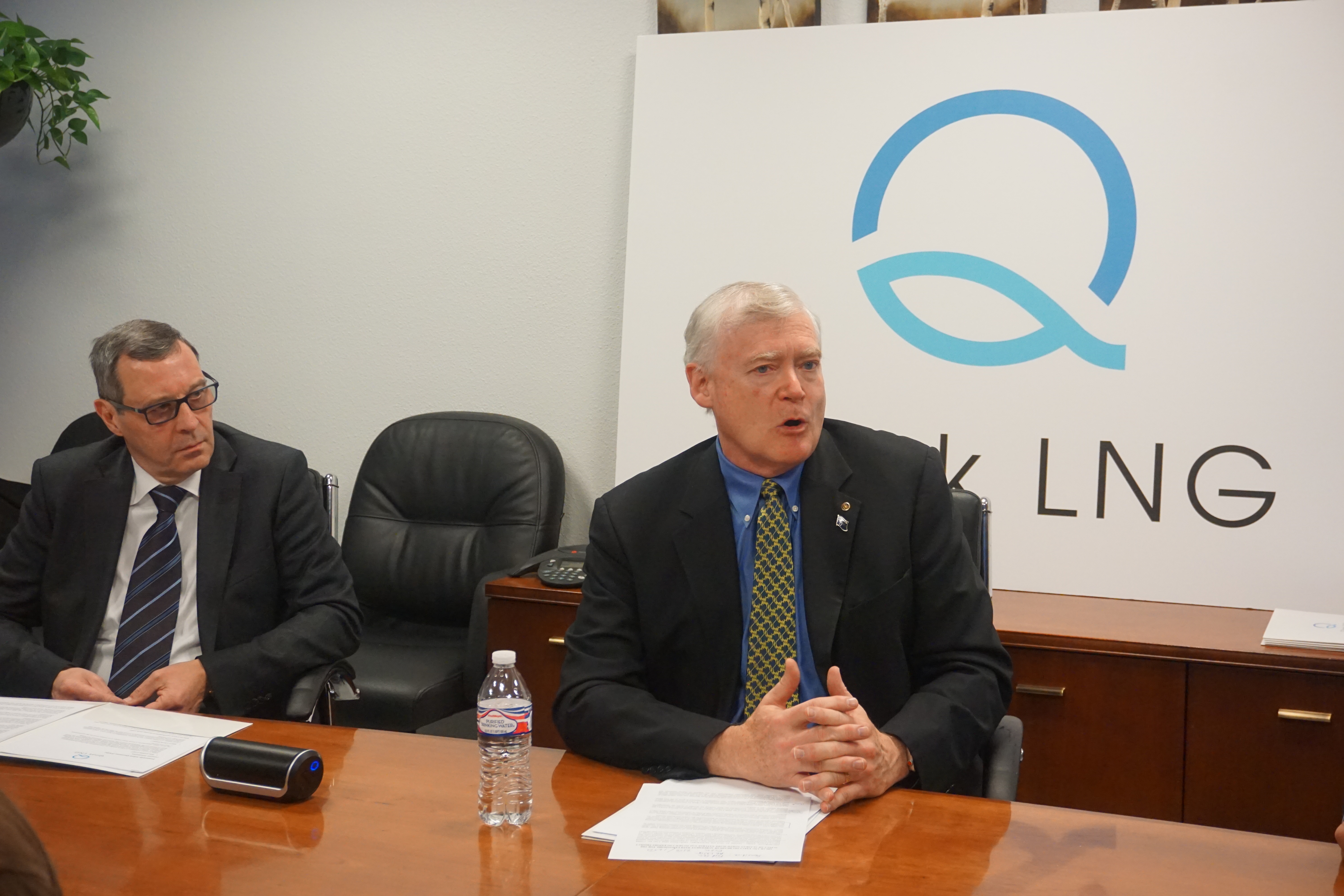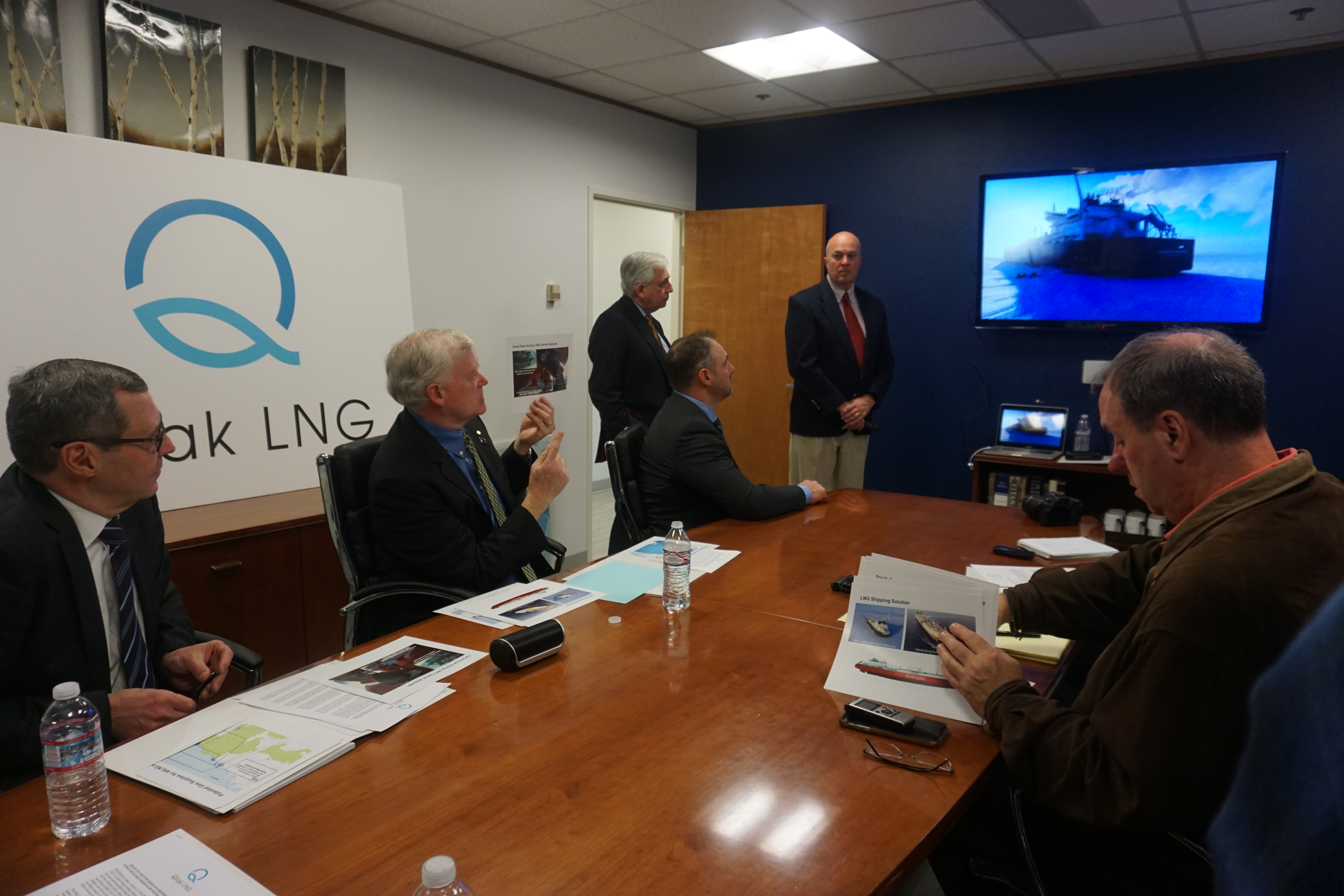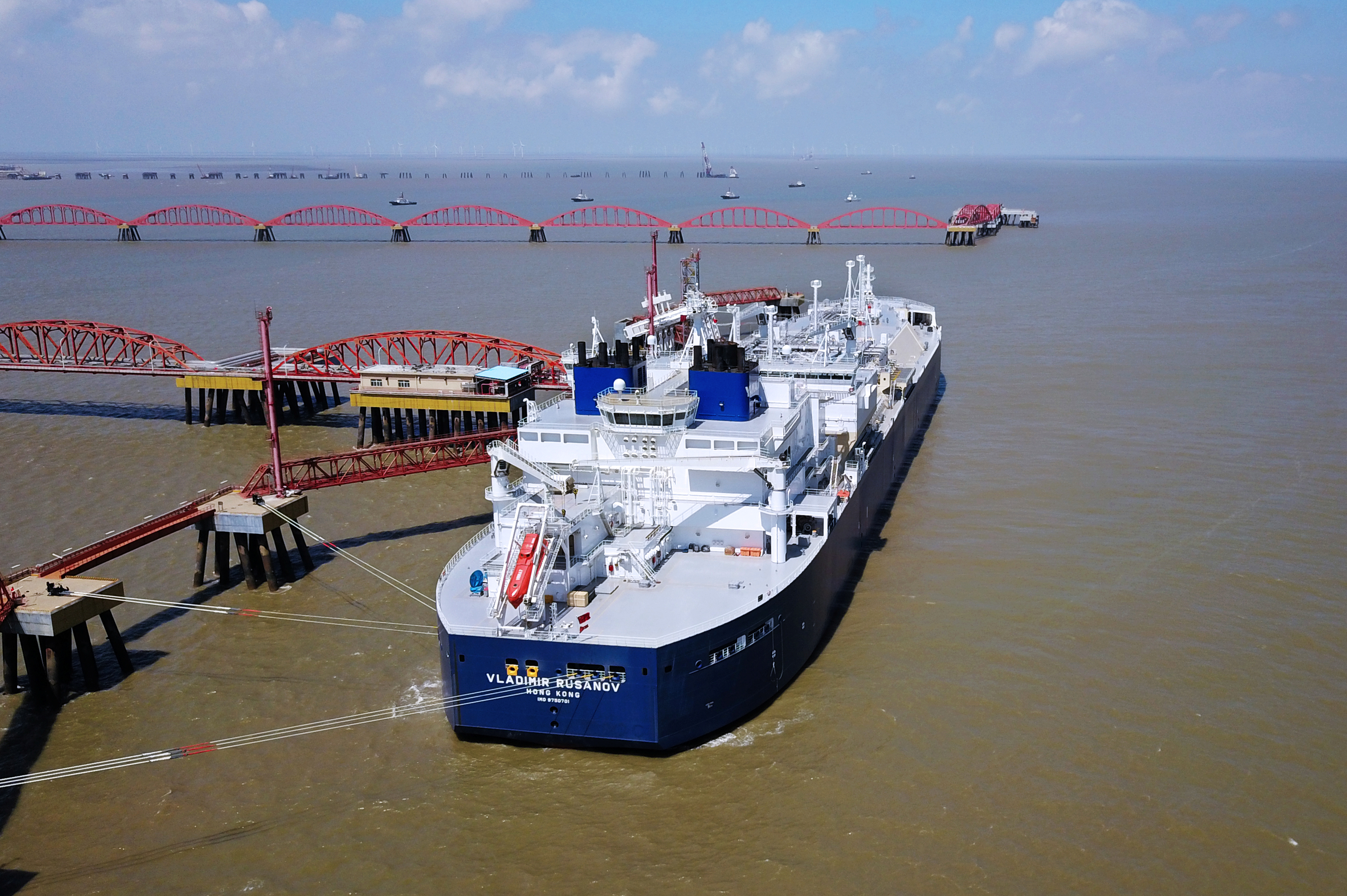Following the lead of Russia’s Yamal LNG, a new plan for Alaska natural gas proposes skipping the costly pipeline
The newly formed Qilak LNG hopes to replicate in Arctic Alaska the success Russia's Novatek has had shipping LNG directly to market from the Arctic.

For half a century, Alaskans have considered plan after plan to build a pipeline that would get the North Slope’s vast but stranded natural gas resources to market. None have come to fruition.
Now, a business group is trying a different approach: No pipeline.
“There’s the old saying that if you always do it like you always did it, you’re always going to get the same result,” said Mead Treadwell, chairman and chief executive of a new company called Qilak LNG that is planning a project to ship liquefied natural gas directly from the North Slope in icebreaking tankers. (Disclosure: Treadwell is a member of the board of ArcticToday.)
Qilak, named for the Inupiaq word meaning sky or heavens, is a subsidiary of Lloyds Energy of Dubai. The LNG shipping idea takes its cue from elsewhere in the Arctic — Russia’s Yamal Peninsula. Novatek’s Yamal LNG complex opened in December of 2018 with a capacity of 16.5 million metric tons a year.
The concept can be replicated in Alaska’s Arctic waters, Qilak officials said a Wednesday news conference in Anchorage.
Compared to the various Alaska pipeline projects that have come to be dismissed as natural gas “pipe dreams,” the Qilak project would be smaller, more manageable and more practical, officials said.
“We’re confident that we can export year-found and be competitive with other projects around the world,” Treadwell said at the news conference.

Qilak used the event to unveil its plans publicly to Alaskans and announce a preliminary agreement with ExxonMobil for gas supplies from a field it operates on the North Slope, Point Thomson.
The field, on the eastern edge of existing North Slope oil development, is an outlier among the Arctic Alaska fields. It is a gas field rather than an oil field. It began production of natural gas liquids in 2016 but has, so far, failed to meet its 10,000-barrel per day target, according to state figures.
Liquids production is limited by the reservoir’s extremely high pressure, according to Exxon Mobil. That means the removal of gas for an export project would ultimately aid in liquids production, Qilak officials said.
Skipping the big pipeline that has been contemplated for other North Slope natural gas projects — envisioned gas-carrying lines that would run anywhere from 800 to nearly 2,000 miles — eliminates a lot of economic obstacles,Qilak officials said.
One is the need to achieve massive economies of scale, they said. The state-blessed natural gas pipeline project that is currently going through regulatory review, the Alaska Gasline Development Corp. LNG project, is planned as a 20 million-ton-a-year project, with an estimated construction cost of $43 billion.
The Qilak project would be much smaller, processing and shipping about 4 million tons a year, with a construction cost of about $5 billion, officials said.
Lloyds has the ability to secure financing and secure markets in places like Japan and the Philippines, even small and incremental markets, Qilak officials said. There is no need to get a commitment from a huge market, they said, as has been contemplated with the currently planned AGDC project that would ship natural gas 800 miles from Prudhoe Bay to tidewater in southern Alaska.
For now, the AGDC project seems to be headed for the same fate as the many other natural gas pipeline plans that preceded it.
The Federal Energy Regulatory Commission is in the process of updating a draft environmental impact statement released in June. But as of now, the exercise seems academic.
A much-touted 2017 joint development agreement with Chinese institutions to secure markets and financing has expired. And at the direction of the administration of Gov. Mike Dunleavy, the AGDC this year cut its staff from 20 to eight.
Those events seem to be following a pattern, Qilak officials said.
“For 50 years we’ve been trying to make this work with a pipeline. The economics have never worked,” Treadwell said.
Technically, the Qilak project would include its own pipeline, but it would be a short one, extending just 6 to 8 miles offshore to a loading facility. That idea behind that offshore site is to minimize conflicts with marine mammals, particularly whales, and with the Indigenous Iñupiat of the North Slope who hunt them, Treadwell said.

The idea of shipping natural gas directly from the North Slope is not new.
Arco Alaska Inc. studied the concept in the 1980s. The company concluded that such a system would be possible, but would require icebreaking escorts for LNG-carrying tankers.
Ships would have to go through as much as 1,200 nautical miles of ice in each direction, said an Arco report presented at an industry conference held in Los Angeles in 1986. Some of that ice would require significant force to break, from first-year ice expected to be 1.5 meters thick to grounded pressure ridges extending more than 20 meters deep, said the report. “Particularly difficult ice ridge conditions may be encountered in the northwest Beaufort Sea near Point Barrow, in the Chukchi Sea between Point Hope and the Bering Straits and in the Bering Sea between St. Lawrence Island and the Bering Straits.”
Those conditions have changed drastically.
As Arctic sea ice has retreated, thick multiyear ice, in particular, has dwindled. In the 1980s, about two-thirds of the end-of-freeze-season ice pack was multiyear ice; as of March 2017, only about a third of the ice was older than one year, according to the National Snow and Ice Data Center. The thickest ice, that over five years old, used accounted for about a third of the total pack, and by March of 2017, less than 5 percent of the ice was that old, according to the NSIDC.
Icebreaking technology has also changed dramatically since the 1980s. New Finnish-designed icebreakers used for Yamal gas deliveries have a spoon-like bow that glides over the ice surface, and similar vessels would be used in Alaska if the Qilak project becomes reality, officials said.
The project is likely to be met with some skepticism, but Qilak’s principals “seem to have done their homework,” said Larry Persily, a longtime Alaska journalist, former state revenue official and former federal coordinator for the Alaska gas pipeline project.
And it is a good idea to focus on low-performing Point Thomson, rather than the Prudhoe Bay field, Persily said.
The Prudhoe Bay field is extremely rich with natural gas. It holds about three-quarters of the North Slope’s known 35 trillion cubic feet of natural gas reserves. But Prudhoe Bay operations still make use of that gas. The approximately 8 billion cubic feet a day that is pumped up with the oil is processed and reinjected into the Prudhoe reservoir, building up pressure there so that oil will continue to flow.
Planning a much-smaller project than the traditional pipeline projects is also a good idea, Persily said.
But he had words of caution.
“You avoid a pipeline. But you pick up other challenges along the way,” he said.
One is the potential for environmental opposition. “You’re offshore, and that, as Shell found out, doesn’t always go as planned,” Persily said, referring to Royal Dutch Shell’s failed attempt several years ago to drill for oil in the offshore Arctic.
Shell abandoned its Arctic Alaska offshore drilling program in 2015, after spending what it said was more than $7 billion on the program.